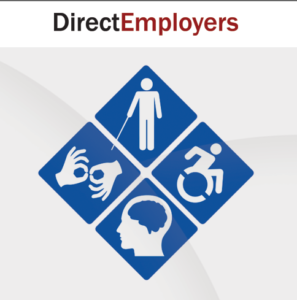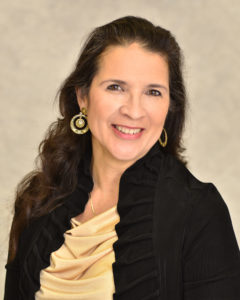We are all in search of great talent.
“If you want to have a workforce that thinks outside of the box I think it’s really important to be tapping into a diverse population like the population of workers with disabilities, because they live outside of the box. They’re constantly thinking about better and smarter ways to do things and to get around obstacles,” says Barbara Otto, CEO of Health & Disability Advocates (HAD). HDA promotes the health and economic security of vulnerable populations so that they can lead secure, dignified lives.
 We are all familiar with the statistics that employees with disabilities tend to have lower rates of absenteeism and higher overall retention rates than workers without disabilities. You will likely find candidates with disabilities in the same places you find other candidates, but there are also customized approaches to attract this talent.
We are all familiar with the statistics that employees with disabilities tend to have lower rates of absenteeism and higher overall retention rates than workers without disabilities. You will likely find candidates with disabilities in the same places you find other candidates, but there are also customized approaches to attract this talent.
Where to Begin
Before you start building a pipeline, you need to ensure that you and your organization are committed and trained to successfully recruit and retain talent with disabilities.
Because you want to be proactive in recruiting, be proactive in training to address any unconscious bias, interviewing and etiquette and appropriate language. There are many sources for training and education. You can check out one example at C5 Consulting.
Once the organization and hiring managers are supportive, you can start to build the relationships with organizations that will be your pipeline for hiring. This will be an ongoing journey, so start small as you find champions within the organization to support your efforts.
What Are Your Talent Needs?
As you begin to reach out to organizations to supply candidates, you need to be clear on the jobs for which you are recruiting. When you meet with the “Supply Side”, be clear on the knowledge, skills and abilities or competencies that will be a fit for your organization.
Review your open job requirements and internship opportunities. Understand the essential functions of open and future positions. Talk with hiring managers about future needs and get commitment for training.
Building Your Core Competencies
Just as with any diverse population, you want your company to become an employer of choice for individuals with disabilities. Applicants and job seekers want to see your community commitment to disability. This will also provide education and training for your company as you open you recruitment pipelines. Invite your Hiring Managers to participate.
Work to establish your organization as a place that welcomes all talent, including individuals with disabilities.
Volunteer with community partners, invite hiring managers to participate, leverage corporate giving to offer financial support to designated partners.
This reminds us that we need to constantly “up our game” in our employer of choice efforts, to ensure we are constantly getting the best and brightest- we cannot afford to limit the pool of talent from which we draw and in fact, we need to expand our talent pool reach- and including individuals with disabilities helps us to do this.
Where Is the Talent?
Individuals with disabilities are individuals first. Many will be individual applicants that are drawn to your company for its reputation, career opportunities and their own interests and skills.
There is no one source but some sources to consider include:
- State and local vocational rehabilitation offices
- Community-based organizations
- Non-profit disability business organizations
- Staffing or search firms
- College campuses, high schools
There are many pipelines to consider: rather than do a wide sweep, match your needs to the talent sources that exist. But don’t limit yourself to only certain pipelines, gradually expand these relationships as you become more disability confident.
First Steps
Begin the journey.
Start with five basic steps:
Contact State Vocational Rehabilitation or VR agencies
- State VR serves two customers: Individuals with disabilities who may be receiving job training and get job placement support- and Your Business.
- They also can be a wealth of information regarding accommodations, job analysis, education and training and may share your jobs with community based organizations. VR offerings and business savvy may vary by state or locale.
- Meet with the VR Business Representative and start to build a relationship. Whether they become a strong pipeline or not, they can offer support you may need along the way.
Contact College and Universities from Which you Already Recruit
- Start building your pipeline by leveraging the colleges where you currently recruit.
- Each school has a disability services office that supports students with accommodations and knows who these students are. While the information is confidential, you can talk with these offices and share information on current and future positions that they can send out to the students
- Some schools have disability focused student organizations- If so, reach out to them.
- There are national internship programs for students with disabilities – you can connect and research these. Two mentioned here are the workforce recruitment program and emerging leaders.
- A direct pipeline exists at a national level- Career Opportunities for Students with Disabilities- a great resource for talent.
Select One – Three Community-based Organizations
- There are national nonprofit community based organizations that locally support individuals with disabilities with training, job development and placement. Select 1-3 to start your interview and selection process. Don’t be afraid to switching out to others if your needs are not being met. You are their customer.
- Some Key organizations include:
- Internet research can help you further develop this list for your local community.
Staffing and Search Firms
- If your company uses outside sources to secure talent, leverage them.
- They may not know that you are working in the disability inclusion space, but by asking for their support, you further expand your outreach.
- Share your developing pipelines and encourage them to get engaged.
- If you are providing or attending disability training, invite them along to learn with you and your hiring managers.
- There are a few firms that exclusively recruit talent with disabilities for their clients- start looking for them and add to your vendor list.
Research Business Organizations that Support Disability
- Today there are only a few business led disability organizations that support employers. The US Business Leadership Network and its affiliates, the BLNs, offer education to employers on disability inclusion and a business to business peer network. Check out the national organization and the list of local chapters and get involved.
- The National Organization on Disabilities or NOD is run by a business Board and can offer services across the US.
- As the business community’s needs develop, you may find additional resources and organizations.
Introduce yourself and your company and ask for their support to build the talent pipeline. Since you have done your prep work, you can share the types of jobs and skills needed so they can begin to understand your needs.

Artiles is a recognized thought leader and was invited to join global and national councils/boards to help further the disability inclusion conversation. These included the World Economic Forum’s (WEF) First Inclusion/Diversity Council, WEF’s Gender Gap Council, US Business Leadership Network (USBLN) and was a founding member of the Conference Board’s Workforce Diversity Council. She also served on the Board for Women’s Business Enterprise National Council (WBENC), WEConnect Canada, and the Executive Board of the Silicon Valley National Society of Hispanic MBAs. A much sought-out keynote speaker, Martha has addressed D&I audiences across the US and the world, including the Multi-cultural Forum and the International Diversity and Inclusion Conference (Barcelona). Her contributions to corporate disability leadership have resulted in many awards, including the US DOL Secretary’s 2002 New Freedom Initiative Award and the US Business Leadership Network Employer of the Year.
As a person of color with a disability lens (as an individual with a non-apparent disability, parent and caregiver of family members with disabilities), she plays a leadership role with underserved populations such as People with Disabilities as President of the Silicon Valley BLN.
